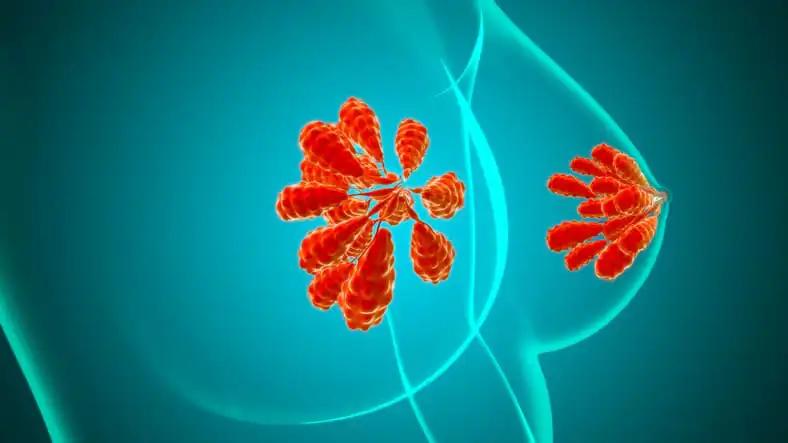KEY TAKEAWAYS
- In high-risk TNBC patients, the NeoTRIPaPDL1 phase 3 multicenter trial tests atezolizumab with neoadjuvant chemotherapy.
- 280 TNBC patients were randomized to neoadjuvant carboplatin and nab-paclitaxel with or without atezolizumab.
- Atezolizumab did not significantly increase PCR compared to neoadjuvant chemotherapy alone; however, PD-L1 expression was associated with greater pCR rates.
- Atezolizumab had more significant adverse events and liver transaminase abnormalities.
There is a need for innovative therapeutic techniques in the treatment of high-risk triple-negative breast tumors (TNBCs), characterized by a poor prognosis, rapid progression to the metastatic stage, and the development of drug resistance. Tumors that express programmed death ligand 1 (PD-L1) have evolved a resistance mechanism to chemotherapy that relies on removing tumor-infiltrating lymphocytes. In sum, the data suggest that blocking the PD-L1/programmed cell death protein 1 checkpoint may increase the effectiveness of conventional chemotherapy. A total of 280 TNBC patients were enrolled in this multicenter study (NCT002620280) and randomly assigned to receive either neoadjuvant carboplatin area under curve 2 and nab-paclitaxel 125 mg/m2 intravenously (iv) on days 1 and 8 without (n = 142) or with (n = 138) atezolizumab 1200 mg iv on day 1. Eight cycles of each regimen were administered every three weeks before surgery, and then four cycles of adjuvant anthracycline treatment were administered afterward.
The primary objective was to examine the correlation between event-free survival (EFS) and pathological complete response rate (pCR defined as the absence of invasive cells in breast and lymph nodes). The intention-to-treat (ITT) population is the primary population for all efficacy endpoints. Comparing the pCR rate following atezolizumab treatment (48.6%) to no atezolizumab treatment (44.4%: OR 1.18; 95% confidence interval 0.74-1.89; P = 0.48), the ITT analysis showed no statistical significance. Both regimens had comparable rates of treatment-related adverse events, but atezolizumab had a considerably greater incidence of major adverse events and liver transaminase abnormalities. The rate of pCR in women with TNBC was not significantly improved by adding atezolizumab to nab-paclitaxel and carboplatin. The existence of PD-L1 expression was the most influential factor in determining the pCR rate in multivariate analysis (OR 2.08). The EFS is still being monitored, and molecular research is also being conducted.
Source: https://pubmed.ncbi.nlm.nih.gov/35182721/
Clinical Trial: https://clinicaltrials.gov/ct2/show/NCT02620280
Gianni L, Huang CS, Egle D, Bermejo B, Zamagni C, Thill M, Anton A, Zambelli S, Bianchini G, Russo S, Ciruelos EM, Greil R, Semiglazov V, Colleoni M, Kelly C, Mariani G, Del Mastro L, Maffeis I, Valagussa P, Viale G. Pathologic complete response (pCR) to neoadjuvant treatment with or without atezolizumab in triple-negative, early high-risk and locally advanced breast cancer: NeoTRIP Michelangelo randomized study. Ann Oncol. 2022 May;33(5):534-543. doi: 10.1016/j.annonc.2022.02.004. Epub 2022 Feb 17. PMID: 35182721.



